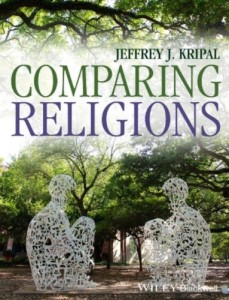If you teach a high school world religions course, you might consider Jeffrey Kripal’s terrific new textbook, Comparing Religions: Coming to Terms.
Kripal does not provide a traditional narrative or survey of the major religions. You won’t find a review of the Four Noble Truths or the five Confucian relationships, or for that matter, the sacred texts of each religion.
Instead, Kripal tackles major issues and themes common to all religious traditions and compares them. For example, he examines the nature of the soul in one chapter, noting that some religions like Judaism, Christianity, Islam and Hinduism “see the soul as created by a deity” while others see it as “uncreated” or “infinite.” In another chapter, he examines the importance of myth and ritual. He compares the Hindu creation myth in the Hymn of Man in the Rig Veda to the Old Testament creation myth in Genesis. In addition, Kripal discusses the development of charismatic individuals in many religions. These are people who exhibit exceptional or superhuman qualities like saints, gurus, and prophetic reformers.
I love several of his chapters and think they can be adapted for high school.
- Kripal’s chapter on myth and ritual is superb. He compares the different kinds of myth such as creation, hero, and trickster, and offers examples of each. He does the same thing with ritual, reviewing the different types like life cycle, civil and sacrifice.
- Kripal discusses food and purity codes in another chapter. You’ll learn why the cow in Hindu India is so sacred, about purity codes in Judaism, and why pork is prohibited in some religions but not others.
- In another chapter, Kripal discusses the soul and salvation in different religions. This is a fascinating chapter, perhaps because Kripal believes that the idea of the soul is at the heart of religion.













